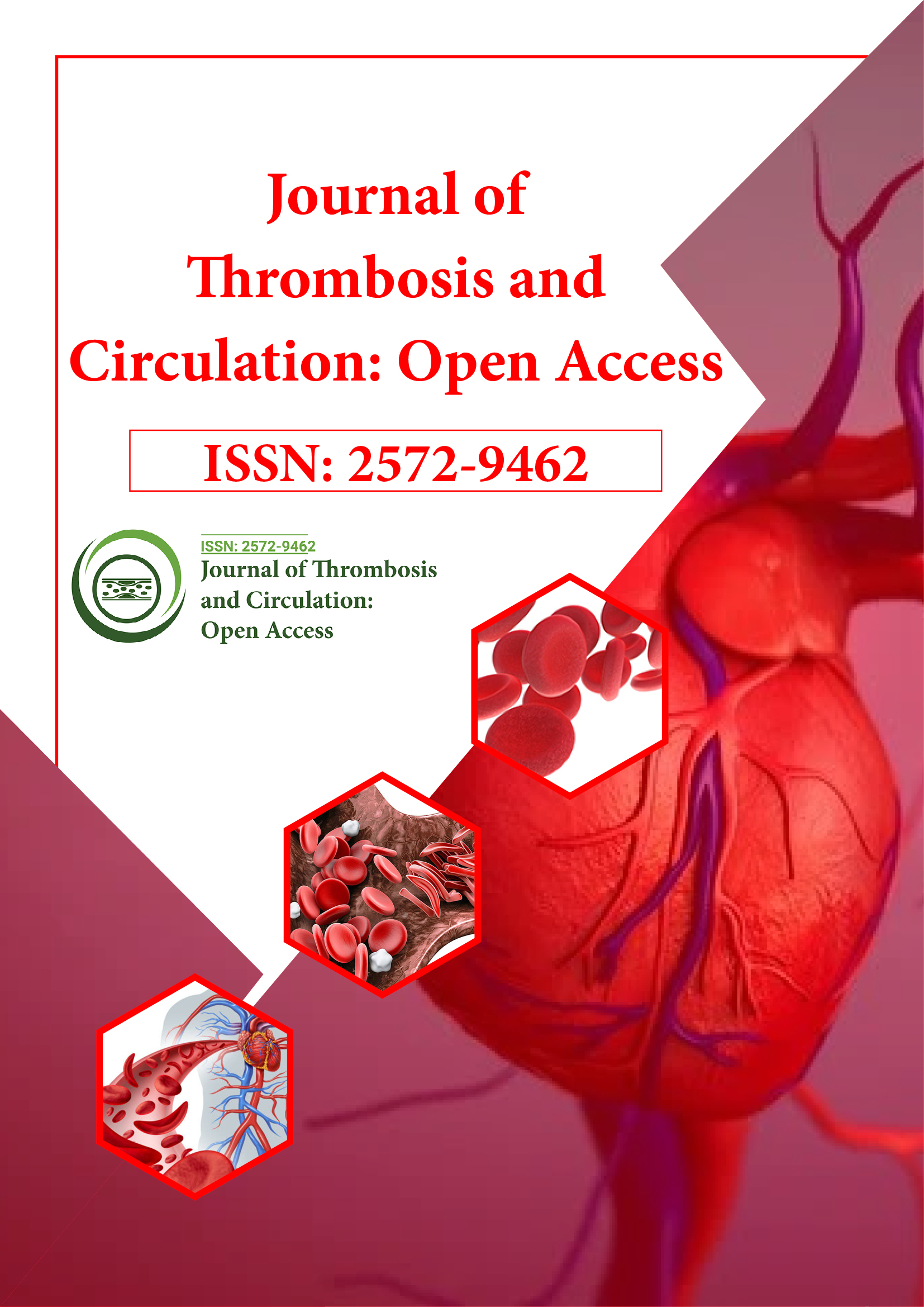Indexed In
- RefSeek
- Hamdard University
- EBSCO A-Z
- Publons
- Google Scholar
Useful Links
Share This Page
Journal Flyer

Open Access Journals
- Agri and Aquaculture
- Biochemistry
- Bioinformatics & Systems Biology
- Business & Management
- Chemistry
- Clinical Sciences
- Engineering
- Food & Nutrition
- General Science
- Genetics & Molecular Biology
- Immunology & Microbiology
- Medical Sciences
- Neuroscience & Psychology
- Nursing & Health Care
- Pharmaceutical Sciences
Review Article - (2021) Volume 7, Issue 6
Platelet Factor 4 Polyanion Safe Edifices: Heparin Actuated Thrombocytopenia and Antibody Initiated Resistant Thrombotic Thrombocytopenia
Deepak Singh*Received: 05-Nov-2021 Published: 26-Nov-2021
Introduction
Insusceptible interceded thrombocytopenia happens when explicit antibodies tie to platelet factor 4/heparin edifices. Platelet factor 4 is a normally happening chemokine, and under specific conditions, may complex with contrarily charged atoms and polyanions, including heparin. The immune response platelet factor 4/heparin complex might prompt platelet actuation, joined by other falling responses, bringing about cerebral sinus apoplexy, profound vein apoplexy, lower appendage blood vessel apoplexy, myocardial dead tissue, pneumonic embolism, skin corruption, and thrombotic stroke. On the off chance that untreated, heparin-instigated thrombocytopenia can be hazardous.
Heparin is a fundamental life-saving medication and is widely utilized as an anticoagulant. Around 175 metric huge loads of heparin are utilized yearly around the world. Drug heparin is creature obtained and separated from the porcine digestive mucosa. Worries over creature obtained biopharmaceuticals, incorporating defilement with prions, infections, or handling pollutions, has prompted endeavors to create bioequivalent heparins from noncreature sources which might be more secure contrasted with creature obtained items. Moreover, bioequivalent heparins might differentiate the current inventory network. Heparin-prompted thrombocytopenia (HIT) is an antagonistic impact of heparin treatment. Type 1 HIT is a nonimmune issue that outcomes from the immediate impact of heparin on platelet enactment. Type 2 HIT is a safe intervened problem that ordinarily happens 410 days after openness to heparin. HIT happens in a little part of patients (0.2 to 3%) going through heparin treatment. HIT is a confounded pathology and related with perilous thromboembolic intricacies. Instant and precise conclusion is basic for HIT treatment. In this way, understanding the science of HIT is basic towards HIT determination and the advancement of bioequivalent heparins [1].
Heparin
Heparin is a contrarily charged straight mucopolysaccharide and is normally found in the granules of pole cells. Heparin is made out of straight chains of disaccharide units of D-glucosamine and uronic corrosive (L-iduronic corrosive or D-glucuronic corrosive). These sugar moieties are sulfated (2.02.5 sulfate bunches per disaccharide unit) the sulfating designs on heparin direct the communication of heparin with different ligands, including proteins, which is space explicit or charge-subordinate. Anticoagulant heparin has trademark sulfated Penta saccharide areas that tight spot to antithrombin III (ATIII), which prompts restraint of the blood coagulation course and results in anticoagulation. Heparin might collaborate with a bunch of ligands in a chargesubordinate way [2].
Biosynthetic heparin
We have delivered biosynthetic heparin by E. coli K5 maturation (to plan heparosan) and chemoenzymatic strategies. The heparosan was first artificially changed over to N-sulfo-heparosan and afterward adjusted by a three-venture enzymatic cycle to get anticoagulant biosynthetic heparin. Utilizing this methodology, multigram amounts of synthetically and naturally identical biosynthetic heparin to that of USP heparin have been illustrated. Starter concentrates on show that biosynthetic heparin showed a comparative cooperation profile to PF4 as USP heparin. By calibrating enzymatic alteration, it very well might be feasible to produce biosynthetic heparin with changed constructions giving great anticoagulation movement yet decreased danger of HIT [3,4].Conclusion
Heparin is a fundamental life-saving medication and is widely utilized as an anticoagulant. Nonetheless, HIT Type II is an unfriendly invulnerable interceded impact of heparin treatment. HIT happens when explicit antibodies tie to PF4/heparin edifices and result in falling insusceptible reaction, prompting apoplexy and thrombocytopenia. HIT is perilous, despite the fact that it happens just in a little part of patients going through heparin treatment, recommending a job of other contributing elements, which might incorporate infection status and hereditary qualities. Momentum advancements in COVID and immunization research have likewise featured the clinical meaning of PF4 in PF4/polyanion complex arrangement and frequency of antibody intervened thrombocytopenia.
REFERENCES
- Linhardt RJ, Claude S. Hudson award address in carbohydrate chemistry. Heparin: structure and activity. J Med Chem. 2003; 46(13):2551â??2564.
- Fareed J, Jeske W, Ramacciotti E. Porcine mucosal heparin shortage crisis! What are the options? Clin Appl Thromb. 2019; 25:1â??3.
- Zhang F, Yang B, Ly M, Solakyildirim K, Xiao Z, Wang Z, et al. Structural characterization of heparins from different commercial sources. Anal Bioanal Chem. 2011; 401(9):2793â??2803.
- Badri A, Williams A, Linhardt RJ, Koffas MA. The road to animal-free glycosaminoglycan production: current efforts and bottlenecks. Curr Opin Biotechnol. 2018; 53:85â??92.
Citation: Singh D (2021) Platelet factor 4 polyanion safe edifices: heparin actuated thrombocytopenia and antibody initiated resistant thrombotic thrombocytopenia. J Thrombo Cir 7: 175
Copyright: © 2021 Singh D. This is an open-access article distributed under the terms of the Creative Commons Attribution License, which permits unrestricted use, distribution, and reproduction in any medium, provided the original author and source are credited.
